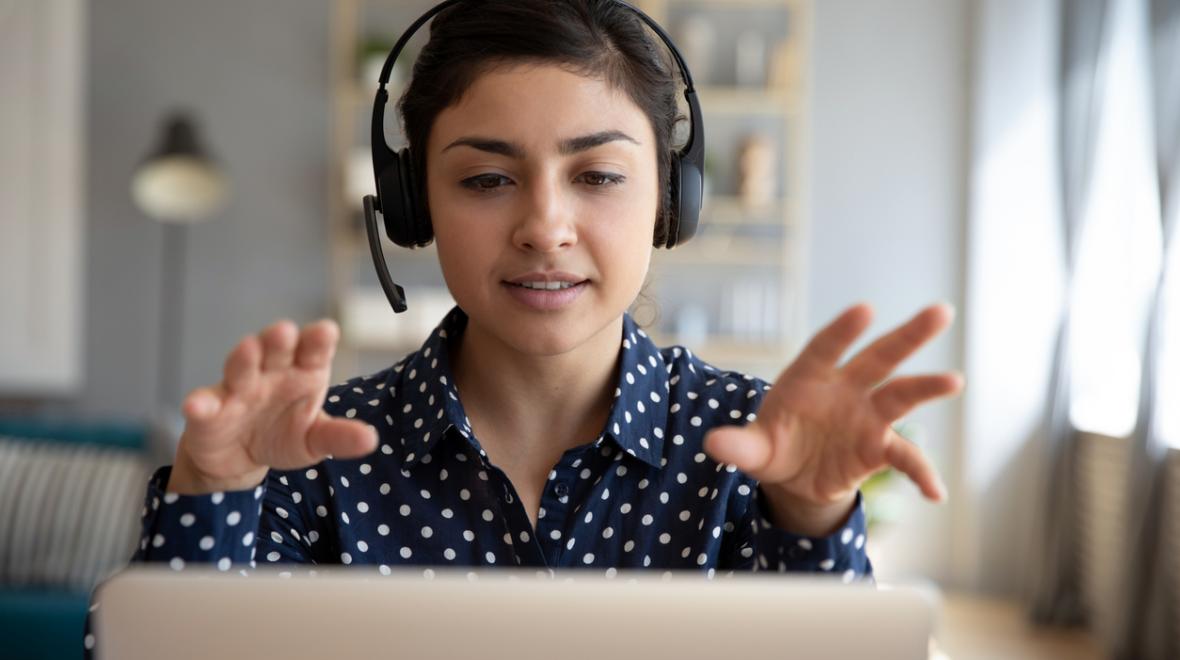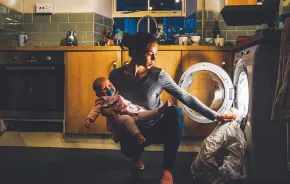
After nearly a month of uncertainty and speculation, Gov. Jay Inslee and State Superintendent Chris Reykdal announced on April 6 that school buildings would be closed for the remainder of the 2019–2020 school year.
In this space that is somewhere between homeschool, virtual school and the Worst Spring Break Ever, many are debating the role of teachers. One hour into her own homeschooling attempts, television writer and producer Shonda Rhimes tweeted, “Teachers deserve to make a billion dollars a year. Or a week.” Opposing thinkers include homeowners demanding their property taxes back, now that classes have been canceled.
After chuckling or rolling your eyes at such outlandish extremes, it is fair to wonder about the role of teachers. Besides emailing parents an overwhelming number of requests to set up online learning accounts, what have we teachers been up to?
What teachers were doing in March:
Early March: Some districts, notably Northshore, closed ahead of the state directive and began piloting online education. Every other teacher spent an inordinate amount of time cleaning and disinfecting their classrooms.
March 12: Gov. Inslee enacted a statewide school closure. He also pressed the pause button on online education, fearing that students with special needs, students without technology access and young children whose parents were working would not receive an equitable education. Most teachers were instructed to stop teaching and not assign work during this time.
March 12–30: With lesson plans on pause, teacher focus shifted to taking care of their most vulnerable students. Districts set up food distribution systems and child care for essential workers. Counselors provided social and emotional support over the phone. Teachers began calling students with special learning needs, students who missed classes in the weeks leading up to the school closures and students who were failing in an effort to catch them up on missing work and get their grades up.
March 30: The Washington State Office of Superintendent of Public Instruction (OSPI) pressed the un-pause button, announcing that educational services now needed to be provided at a distance. Teachers began piloting online and other distance-learning models. Many teachers spent the last few days of March doing whole-class check-ins with the goal of assessing which students were able to engage with distance learning and contacting those who did not show up online.
Distance learning considerations
For the rest of the school year, online learning will allow parents never-before-seen footage of their children’s teachers in action, at a time when teachers have never felt less prepared to teach. While some parents are impressed by the seamless switch to online learning, others are anxiously wondering when their child will be given their first assignment. During this time, teachers would like families to do a few things:
Try not to compare educational experiences
As classrooms move online and parents get a unique and unfiltered window into the classroom, teachers will naturally become more subjected to critical scrutiny and comparison. Some school districts are taking online attendance at 9 a.m. Others are providing optional, stapled-together enrichment packets. Some teachers have fancy YouTube channels; still others are emailing out ordinary lists of student tasks.
Often the decisions of whether or not to take attendance, hold class meetings virtually or give letter grades are being made at the district level. Perhaps you wish that your child’s teacher held a daily videoconferencing meeting like your niece’s teacher does, but many educators have been directed to use or avoid specific platforms by their district. Some districts are better equipped for online teaching than others. Some teachers are better at teaching online than others.
Is this unfair? Yes. Of course, it is. Teachers are truly worried about the educational disparity of online education across the state, but it may not be an issue we can tackle in the next couple of months.
Realize that inequity issues have never loomed so large
Teachers will, however, be working to tackle inequity in their own classrooms. The paramount focus of most teachers will be on their most vulnerable students. The bulk of the work your child’s teacher is doing is with those kids whom you don’t see in that virtual-class meeting. When face-to-face in the classroom, it is somewhat easier to provide an equal learning experience for each student, but this is much more challenging and even more important now that students are at home. Teachers are spending time calling individual students to give them verbal tests that others took online, or mailing separate books and work packets to students’ homes, or filling out applications for free internet services for them, or simply calling that teenager every other day to remind him to finish up that essay that was due back in March.
This means that if you are a parent of a child who is safe, passing classes, equipped with technology and has participated in class assignments or check-ins, you may not have heard personally from every teacher, particularly high school teachers who may teach over 150 students. We’ve been busy tracking down that kid who missed two weeks of school in February and that senior who started working full-time and promptly forgot about classes the moment schools closed.
Remember that teachers are dealing with COVID-19 concerns, too
There is no such thing as a typical substitute teacher right now, so if a teacher gets sick or needs time to deal with family tragedies, learning may be put on pause. Our lives and child-care arrangements have been upended as well, so hours of teacher availability may vary. Teachers should be checking their email and be available during the school day, but some of us will be doing the bulk of our work during naptime, after bedtime, or between grocery drop-offs for our parents and older relatives.
Please contact us
Your student should have engaged in some sort of check-in or educational activity at this point. If your student has not been in contact with teachers (with every teacher, in the case of middle and high school students), check to make sure that the correct contact information is on file with the school and then email teachers you have not heard from.
Do not be shy about emailing teachers (or better yet, teach your child how to email their teachers). It is completely appropriate to expect a prompt response. Do not feel bad sending emails to teachers. You are not bothering us. We want to hear from you. We expect high volumes of email right now. Please, reach out if you have any questions or concerns.
Let teachers know if your child or your family is struggling to make online learning work for any reason. There may be more leniency than normal when it comes to adjusting assignments or grading on a different scale.
A final and most important request
The end of the year is always a special time when classes come together to create culminating projects, celebrate learning and solidify that student-teacher bond that can sometimes last a lifetime. Please continue to include us in your child’s education. Tell us when your daughter has an ah-ha moment at home. Encourage your son to write to his teacher about what he is reading or listening to. Send us their senior pictures and videos of at-home science projects. We are craving connection with our students, and we will also treasure moments when they learn, whether it is in our classroom or outside of it.











